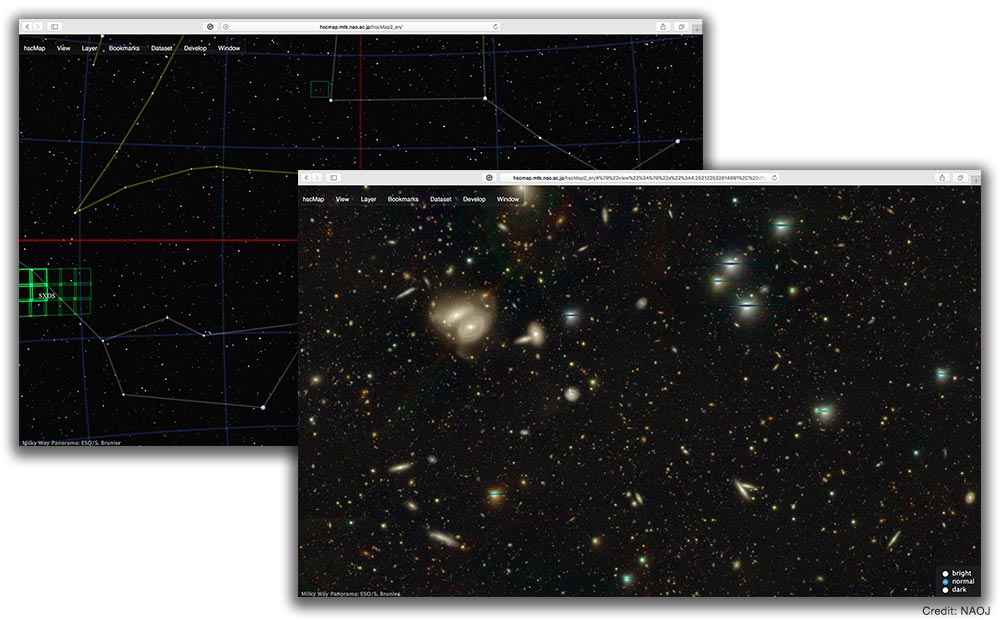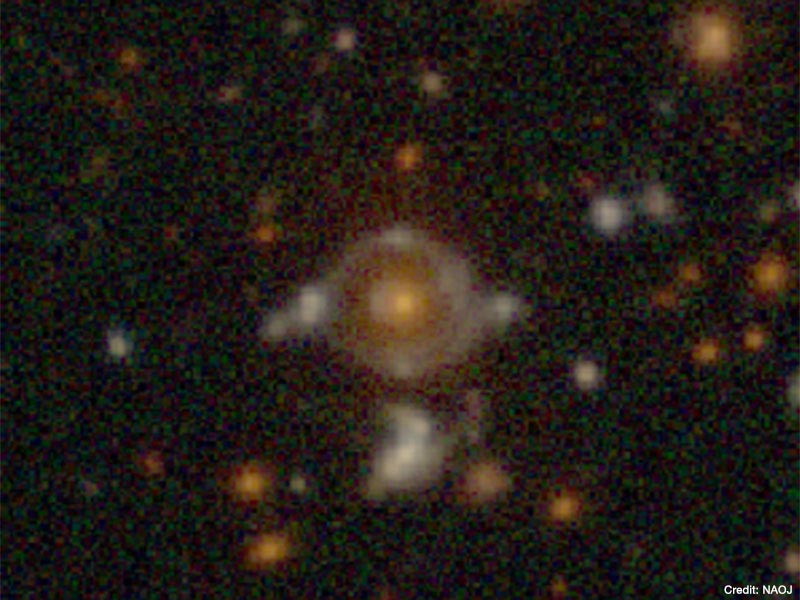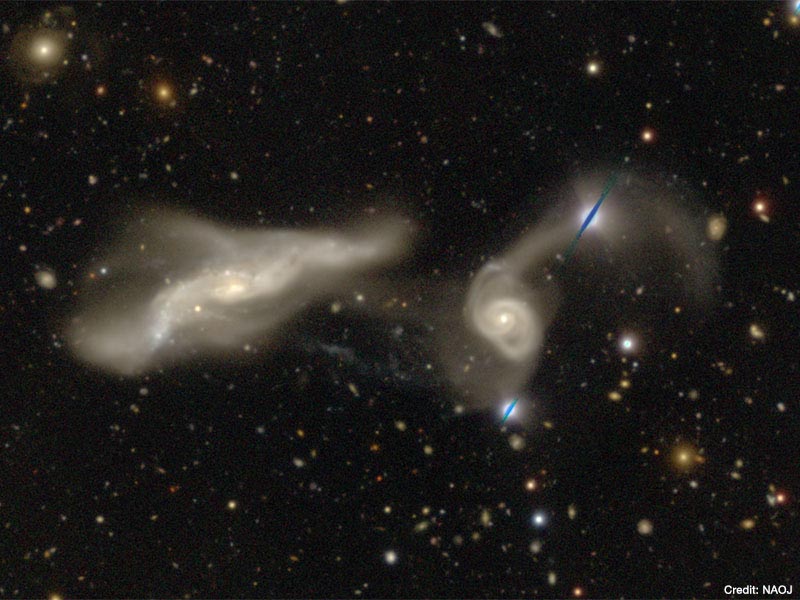Amazing Universe Captured with the Subaru Telescope! “HSC Viewer” Released to the Public
| Topics
The first dataset from the Hyper Suprime-Cam (Note 1) Subaru Strategic Plan (HSC-SSP) (Note 2) can be seen easily with the “HSC Viewer” on your PC or tablet.

The HSC Viewer is the user-friendly website to display the HSC-SSP data. When you start zooming into one of the green squares displayed on the initial screen of the HSC Viewer, an HSC image appears. If you keep zooming deeper into the Universe, thousands of tiny points of light start to gush out, even from dark, starless areas. Each dot corresponds to one galaxy with hundreds of billions of stars. You can see various galaxies with different sizes, shapes, and colors at different distances: from nearby galaxies which appear large with clearly distinguishable shapes, to distant galaxies seen only as faint red dots.
The menu bar provides a list of objects recommended by the developers. For example, the “Eye of Horus” with strong gravitational lensing effects, or the “Tadpole Galaxy” with a long tail of stars made by gravitational interaction due to a galactic encounter. Please enjoy all these eye catching objects.


In the wide area observed by the Subaru Telescope, you can find many interacting galaxies affecting each other's shapes through mutual gravitation. The Tadpole Galaxy described above is one of them. NAOJ is now developing a program to let the public identify the shapes of interacting galaxies in the HSC data.


“I developed this viewer so the general public can become familiar with the latest, extensive HSC data. I hope you enjoy exploring the Universe which the Subaru Telescope observes,” said Michitaro Koike (Specially Appointed Senior Specialist from Subaru Telescope), the developer of the HSC Viewer.
The Subaru Telescope can see tiny, faint distant galaxies. Why don't you experience the expansiveness of the real Universe observed by the Subaru Telescope?
The explanatory site
for the HSC Viewer
“Exploring the Universe
with Subaru Telescope Data”
(Note 1) Hyper Suprime-Cam (HSC), mounted on the Subaru Telescope located at the summit of Maunakea, Hawai'i, has been in operation since 2013. It is an epoch-making giant digital camera with a total of 870 million pixels and an extremely wide field of view; it can capture a portion of the sky nine times bigger than the full moon. Back
(Note 2) HSC-SSP is an extensive survey program started in 2014 to observe for 300 nights with HSC. The first HSC-SSP dataset was released to the public on February 27, 2017 (Hawaii-Aleutian Standard Time). The release includes data from the first 21 months, corresponding to 61.5 nights of observations. The observed area is equivalent to more than 600 full moons. The total amount of data is enormous; 80 terabytes, comparable to about 10 million images taken by a normal digital camera. For this reason, we developed a system where each user can access the NAOJ data server from his/her PC or tablet. Back